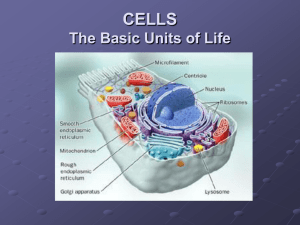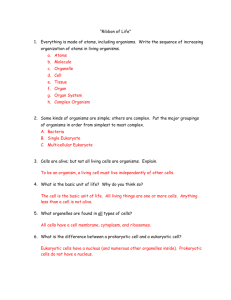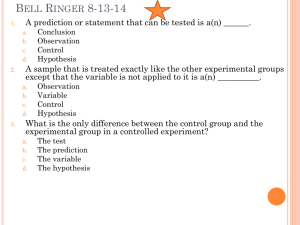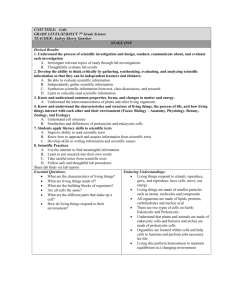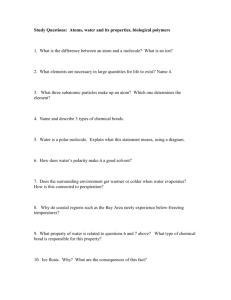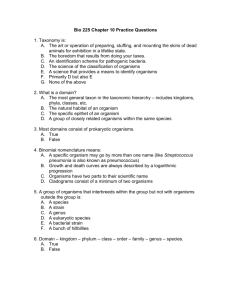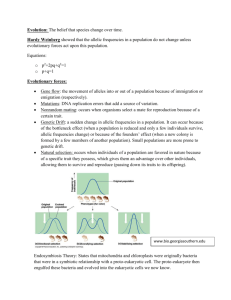File
advertisement
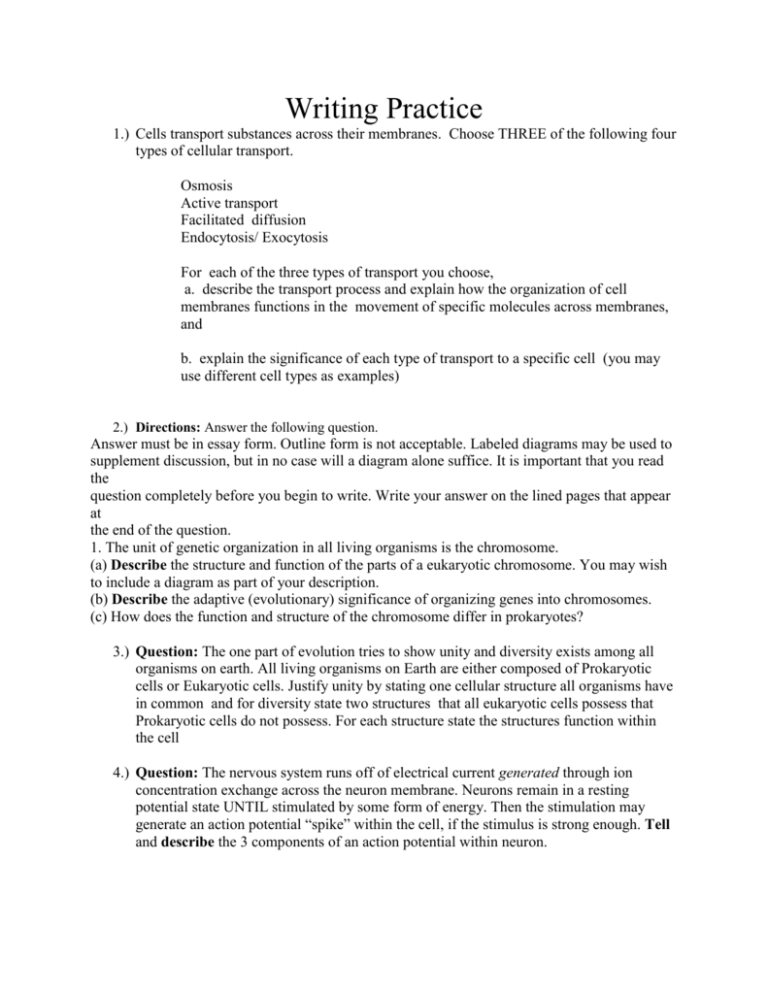
Writing Practice 1.) Cells transport substances across their membranes. Choose THREE of the following four types of cellular transport. Osmosis Active transport Facilitated diffusion Endocytosis/ Exocytosis For each of the three types of transport you choose, a. describe the transport process and explain how the organization of cell membranes functions in the movement of specific molecules across membranes, and b. explain the significance of each type of transport to a specific cell (you may use different cell types as examples) 2.) Directions: Answer the following question. Answer must be in essay form. Outline form is not acceptable. Labeled diagrams may be used to supplement discussion, but in no case will a diagram alone suffice. It is important that you read the question completely before you begin to write. Write your answer on the lined pages that appear at the end of the question. 1. The unit of genetic organization in all living organisms is the chromosome. (a) Describe the structure and function of the parts of a eukaryotic chromosome. You may wish to include a diagram as part of your description. (b) Describe the adaptive (evolutionary) significance of organizing genes into chromosomes. (c) How does the function and structure of the chromosome differ in prokaryotes? 3.) Question: The one part of evolution tries to show unity and diversity exists among all organisms on earth. All living organisms on Earth are either composed of Prokaryotic cells or Eukaryotic cells. Justify unity by stating one cellular structure all organisms have in common and for diversity state two structures that all eukaryotic cells possess that Prokaryotic cells do not possess. For each structure state the structures function within the cell 4.) Question: The nervous system runs off of electrical current generated through ion concentration exchange across the neuron membrane. Neurons remain in a resting potential state UNTIL stimulated by some form of energy. Then the stimulation may generate an action potential “spike” within the cell, if the stimulus is strong enough. Tell and describe the 3 components of an action potential within neuron. 5.) Question: The pyruvate conversion is an important step in being able to utilize carbohydrates, lipids, or proteins (amino acids) for energy production by the mitochondria. Explain the purpose of the Pyruvate conversion and how lipids and amino acids become involved at this point 6.) Question: As animals are heterotrophic organisms, the ability to move and find food is important. Movement on earth, for animals, occurs basically in three different environments (Air, land, or water). Each environment has the same forces working against movement (Friction and gravity). Choose ONE environment for movement and tell to what degree each force hinders movement and describe how those forces are overcome by the anatomical structure of animals that utilized that environment 7.) Question: Carbon is an extremely important element to all life forms on the planet. Life on Earth, as we know it, could not exist without this element. A) Identify the ultimate source of all Carbon for living organisms alive today and B)provide two brief explanations of why Carbon is important molecularly speaking 8.) Question: Lectins are naturally occurring plant proteins that help promote increased mitosis within plant root tips. These proteins influence the normal production of MPF within the root cells and thereby speed up the cell cycle. In no more than three sentences, state ONE similarity and TWO differences between Lectin influenced cells and cancer cells


